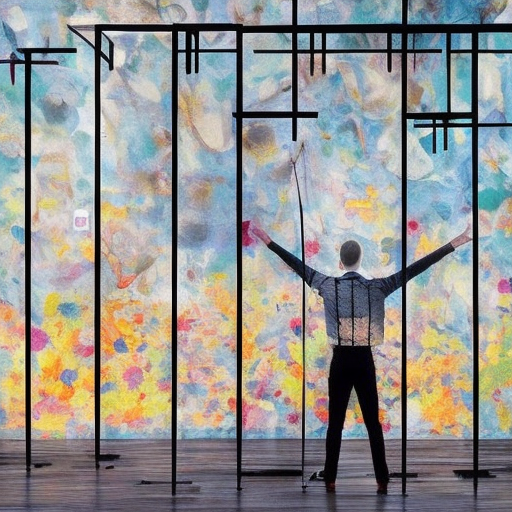Summary:
Art installations are immersive and interactive works of art that are created to transform a space and engage the viewer. They can take various forms, including sculptures, multimedia displays, and performances. Art installations often challenge traditional notions of art by incorporating unconventional materials and techniques. They have gained popularity in recent years for their ability to create unique and memorable experiences for audiences.
What are Art Installations?
Art installations are temporary or permanent works of art that are created to be experienced in a specific location. Unlike traditional artworks that are confined to galleries or museums, installations are designed to transform a space and engage the viewer in a multi-sensory experience. They can be found in public spaces, galleries, museums, and even natural environments.
Types of Art Installations:
Art installations can take various forms, depending on the artist’s vision and the intended message. Some common types of installations include:
- Sculptural Installations: These installations are three-dimensional artworks that occupy physical space. They can be made from a variety of materials, such as metal, wood, glass, or even found objects. Sculptural installations often invite the viewer to interact with the artwork and explore its different angles and perspectives.
- Multimedia Installations: These installations incorporate various media, such as video, sound, and lighting, to create a multi-sensory experience. They often use technology to enhance the viewer’s engagement with the artwork. Multimedia installations can be highly immersive and transport the viewer into a different world.
- Site-Specific Installations: These installations are created specifically for a particular location. The artist takes into consideration the architectural, historical, or cultural context of the site and designs the installation accordingly. Site-specific installations often interact with the surroundings and create a dialogue between the artwork and the environment.
- Performance Installations: These installations involve live performances or actions by the artist or performers. They can include elements of theater, dance, music, or any other form of performance art. Performance installations are often ephemeral and rely on the presence of the audience to complete the artwork.
The Purpose of Art Installations:
Art installations serve multiple purposes. They can be used to express social or political commentary, provoke thought and discussion, or simply provide aesthetic pleasure. Installations often challenge traditional notions of art by incorporating unconventional materials and techniques. They blur the boundaries between art and life, inviting the viewer to actively engage with the artwork and question their own perceptions.
Popular Art Installations:
Over the years, several art installations have gained significant popularity and become iconic. Some notable examples include:
- The Gates by Christo and Jeanne-Claude: This installation consisted of thousands of saffron-colored fabric panels that were suspended from gates along the pathways of New York City’s Central Park. The project aimed to transform the park into a vibrant and immersive artwork.
- Cloud Gate by Anish Kapoor: Located in Chicago’s Millennium Park, Cloud Gate is a massive stainless steel sculpture that reflects the city’s skyline and the viewers themselves. Its mirror-like surface and unique shape have made it a popular tourist attraction.
- Infinity Mirrored Room by Yayoi Kusama: This installation features a small room lined with mirrors and filled with LED lights. The mirrors create an illusion of infinite space, while the lights change colors and patterns, creating a mesmerizing experience for the viewer.
- The Weather Project by Olafur Eliasson: This installation filled the Turbine Hall of London’s Tate Modern with artificial mist, light, and a giant sun-like sculpture. The immersive environment created a contemplative and otherworldly experience for visitors.
Conclusion:
Art installations are immersive and interactive works of art that transform spaces and engage viewers in unique experiences. They can take various forms, including sculptures, multimedia displays, and performances. Art installations challenge traditional notions of art and often incorporate unconventional materials and techniques. They serve multiple purposes, from social commentary to aesthetic pleasure. Some popular installations have become iconic and attract visitors from around the world. Art installations continue to push the boundaries of creativity and provide new ways for audiences to engage with art.












